Product pictures
| Amount Per 1 meal, 291 g | |||
| Calories | 400 Kcal (1675 kJ) | ||
| Calories from fat | 180 Kcal | ||
| % Daily Value* | |||
| Total Fat | 20g | 31% | |
|---|---|---|---|
| Saturated Fat | 8g | 40% | |
| Cholesterol | 95mg | 32% | |
| Sodium | 640mg | 27% | |
| Potassium | 310mg | 7% | |
| Total Carbs | 38g | 13% | |
| Sugars | 1g | 4% | |
| Dietary Fiber | 3g | 12% | |
| Protein | 15g | 30% | |
| Vitamin C | 3mg | 5% | |
| Iron | 2.3mg | 13% | |
| Calcium | 80mg | 8% | |
* Percent Daily Values are based on a 2000 calorie diet. Your daily values may be higher or lower depending on your calorie needs.
Find out how many calories should you eat.
Ingredients And Nutrition Overview
Best
choice Good
choice Poor
choice Avoid
it!
choice Good
choice Poor
choice Avoid
it!
-
WeightWatchers Points: 9.1, PointsPlus: 10, SmartPoints: 13
WeightWatchers Points are estimated by carbohydrates, fats, protein and fiber in product. They are not an affirmation of better quality or nutritional value of the product or its manufacturer. Only way to count for dieters. Less points are better.
Read more at Weight watchers diet review -
Over 40% of daily saturated fat!
Bad! More 40% of daily saturated fat!
For years Saturated fat was claimed to raise cholesterol levels and give us heart attacks. Today different studies refute this claim. They say, that replacing saturated fat with carbohydrates or refined starch or sugar is not changing the heart disease risk. Not processed carbs nor saturated fats are good for you. Only if you replace it with polyunsaturated fat, you'll get a reduction in heart disease risk. So try to have a balanced diet. -
Very high cholesterol
Today cholesterol is no longer a villain. The 2010's USDA guidelines told us to limit cholesterol from foods
Now experts say cholesterol is "not a nutrient of concern" because cholesterol from foods doesn't cause higher
blood cholesterol levels.
Nevertheless try to consume no more than 300 milligrams daily.
This product has 90 mg of cholesterol or more.
How to lower the cholesterol intake? Here are some advices
- Try to limit your cheese, dairy and meat intake to one item per meal.
- Avoid meals with multiple sources of cholesterol (chicken with cheese, junk food)
- Try to indclude in your diet low- or nonfat dairy, seafood, legumes and nuts.
- Choose water instead of milk for your coffee.
-
Salty! Has over 27% of the daily sodium max
The average American consumes 5,000 mg of sodium daily — twice the recommended amount amount of 2400mg for healthy adults, this is 1 teaspoon of salt.
For medical reasons many people should not exceed 1500mg of sodium.
Surprisingly, you're responsible for only 15% of the sodium in your diet the bigger part - 75% of the sodium that you consume each day comes from processed foods, not home cooking or the salt shaker.
Excess sodium intake increases the risk of high blood pressure, hypernatremia, hypertension, cardiovascular disease and other heart problems.
Are these reasons enough to cut the sodium intake? No doubt! -
Convert Salt tsps to Sodium mg easily
Salt (NaCl) is not excactly sodium (Na).
It is not right to use these terms as synonyms.
The FDA recommended limit of sodium is 2,300 mg per day (or even less - about 1500 mg while one is on low sodium diets).
This is much less than the weight of salt.
(5,750 mg per day or 3,750 mg for low sodium diet) and not so convenient to calculate.
Know how much sodium is in your salt - without a calculator:
1/4 tsp salt = 600 mg sodium
1/2 tsp salt = 1200 mg sodium
3/4 tsp salt = 1800 mg sodium
1 tsp salt = 2300 mg sodium -
Great! Contains less than 1.5 tsp of sugar.
Great! Contains less than 1.5 tsp of sugar per serving!
-
Great source of fiber! More than 12% daily!
Eat more fiber. You've heard it many times. But why it is so good for your health?
Dietary fiber is best known for its ability to make our digestion going right.
So want to prevent or relieve constipation - eat more fiber!
There are also other great health benefits as well, such as lowering your risk of diabetes, heart disease and cancer, and helping to maintain a healthy weight by helping to feel you full longer.
The best source of fiber are fruits, vegetables, whole grains and legumes and not processed foods with added fiber. -
Interested in getting more protein?
Protein is important, but some of the protein you find in this product isn't exactly natural.
The protein comes from one of the following sources:
- milk protein concentrate
- whey protein isolate
- soy protein isolate
and that it's not ideal to get protein only from processed goods.
If you're looking for more protein, try beans, quinoa, nuts, seeds, peas and spinach & leafy greens.
Not only do they have protein, they're filled with other vitamins and minerals. -
Whoa! What a high amount of calories!
This product really has a lot of calories.
Energy(calories) is required to implement body metabolism and physical activity.
If we consume more energy than we use for metabolism and physical activity, all that surfeit will be stored as body fat.
So you're not following a high calorie diet or not trying to gain weight, you may want to revise the wish to eat it.
If You are trying to gain weight or following high calorie diet try out the healthy suggestions:
- Consume more nuts.
Nuts and seeds are high in calories and fiber and full of good Omega fats.
Take any meal and add to it some nuts.
- add extra olive oil to your main dishes and salads;
- increase your healthy carbohydrate intake with whole wheat products such as pasta, crackers an so on;
- eat more brown or wild rice, buckwheat and other grains;
- Even eat some dark chocolate.
Avoid using animal fats, fried foods and greasy snacks as they have huge amount of trans-fats, cholesterol and other unhealthy elements. -
Carrageenan is an additive made from seaweed.
It is used as a thickener in products such as ice cream, jelly, chocolate milk, infant formula, cottage cheese.
It is a vegetarian and vegan alternative to gelatin.
It has been used for hundreds of years in Ireland and China, but only made headway into modern food processing in the last 50 years.
The processing steps after harvesting the seaweed include drying, grounding, filtration, treatment with potassium hydroxide, removal of cellulose by centrifuge, concentration by evaporation, drying, and grounding.
Interestingly, the Philippines account for the vast majority of the world supply of carrageenan.
In some animal studies, carrageenan was shown to cause intestinal lacerations and tumors.
A 2001 meta-study of 45 peer-reviewed studies concluded that carrageenan consumption may result in gastrointestinal malignancy and inflammatory bowel.
The FDA has approved carrageenan as safe, basing its decision on industry funded studies.
European agencies and the World Health Organization have also deemed carrageenan safe, with the exception of infant formula.
The fear is the a baby's gut may be unable to handle the large carrageenan molecules.
In some individuals carrageenan may cause intestinal discomfort or worse. -
Contains MSG-like ingredients
People feeling reaction to MSG may also react adversely to MSG-like substances.
Glutamates or chemically similar items are added to improve a product's taste.
Here is a short list of common MSG-like substances:
- Yeast extract
- Autolyzed yeast
- Hydrolyzed proteins
- Textured proteins
- Anything "enzyme modified"
Allergens
Milk Allergy, Lactose Allergy, Corn Allergy, Eggs Allergy, Wheat Allergy, Gluten Allergy, Soy Allergy
Meatballs swedish Ingredients
Sauce (Water, Sour Cream [Cream, Cultured Milk, Whey, Carrageenan, Guar Gum, Modified Corn Starch, Sodium Phosphate, Carob Bean Gum, Potassium Sorbate], Modified Corn Starch, Beef Flavor [Beef Broth, Yeast Extract, Salt, Maltodextrin, Citric Acid, Flavor, Lactic Acid], Sherry Wine, Caramel Color, Salt, Flavor [Potassium Chloride, Ammonium Chloride, Yeast Extract, Natural Flavor {Lactic Acid, Citric Acid}], Black Pepper, Onions), Egg Noodles: Egg Noodle Pasta (Water, Enriched Wheat Flour [Semolina Wheat Flour, Niacin, Iron, Thiamine Mononitrate, Riboflavin and Folic Acid], Dried Whole Eggs, Soybean Oil, Citric Acid), Meatballs (Mechanically Separated Chicken [Chicken, Salt, Natural Flavorings, Citric Acid], Pork, Beef, Water, Soy Flour, Caramel Color, Soy Protein Concentrate with Less than 2% Soy Lecithin, Enriched Bleached Wheat Flour [{Niacin, Reduced Iron, Thiamine Mononitrate, Riboflavin, Folic Acid}, Durum Flour, Leavening {Sodium Bicarbonate, Sodium Acid Pyrophosphate}, Yeast], Dehydrated Onion, Crushed Garlic [Garlic, Citric Acid], Soy Sauce [Water, Wheat, Soybeans, Salt], Caramel Color, Sodium Tripolyphosphate, Salt, Spice, Flavoring [Spice Extract with Soybean Oil, Mono and Diglycerides, Sunflower Lecithin]).
You Might Also Like
% RDI of Main Nutrition Facts
20%
of RDI* (400 calories) 291 g
-
Cal: 20 %
-
Fat: 30.8 %
-
Carb: 12.7 %
-
Prot: 30 %
-
0%25%75%RDI norm*
Calories Breakdown
- Carbs (38.8%)
- Fat (45.9%)
- Protein (15.3%)
Get Your Recipe of Health!
Follow RecipeOfHealth on Facebook!

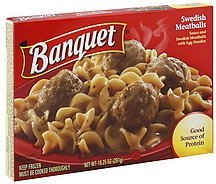
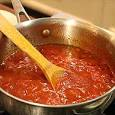
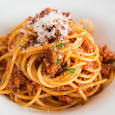


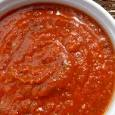
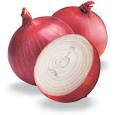
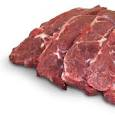
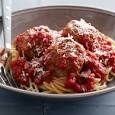
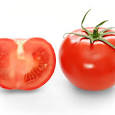
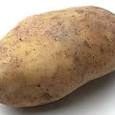

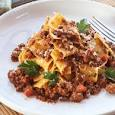
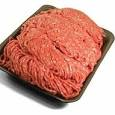

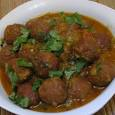
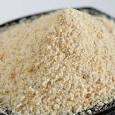
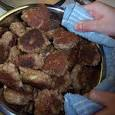













Add your comment